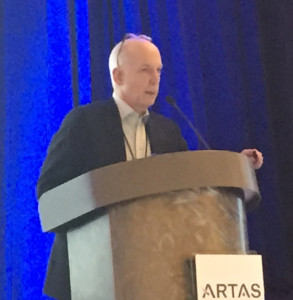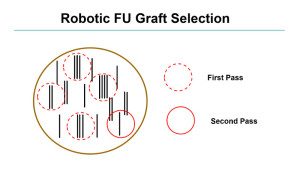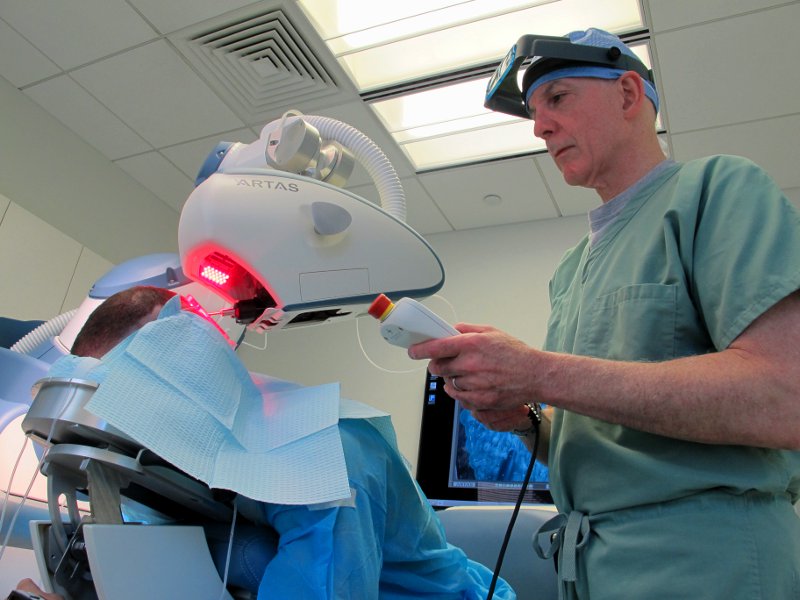Earlier this month, Bernstein Medical physician Dr. Robert M. Bernstein presented at the annual ARTAS Users Meeting in Las Vegas, Nevada discussing the newest hair restoration techniques and the upgrade of the ARTAS 9x. Over 200 medical professionals met to share their knowledge of and experience with the ARTAS Robot for hair restoration.
Dr. Bernstein Presents Advances of the ARTAS 9x Robotic Hair Transplant System
On March 9th, 2018 at the 2018 ARTAS Users Meeting in Las Vegas, Nevada Dr. Robert M. Bernstein, a Clinical Professor of Dermatology at Columbia University and founder of Bernstein Medical – Center for Hair Restoration, presented the latest in Robotic Hair Transplantation using the ARTAS® Robot. Dr. Bernstein described the benefits of the new technology, such as decreased time and increased accuracy of the robotic procedure.
Dr. Bernstein worked with ARTAS engineers in the development of these new advances and tested them in our New York facility. These updates make Robotic FUE a faster and more efficient procedure.
The ARTAS 9x includes software and hardware updates such as white LED lights that are easier on the users’ eyes, a base extender, smaller size needle options, a more ergonomic headrest, automated scar detection, faster harvesting, and streamlined ARTAS Hair Studio software.
One important upgrade of the ARTAS 9x is the use of white LED light and yellow colored tensioner. This allows technicians to extract the grafts while the system is still harvesting the hairs — without causing eye fatigue. This advance alone can significantly reduce operating time. The base extender and the smaller robotic head of the ARTAS 9x allows for a longer reach so less repositioning of the patient is needed.
The ARTAS 9x also has artificial intelligence that detects and blocks out existing scarred portions of the donor area from being harvested. The streamlined ARTAS Hair Studio of the ARTAS 9x only requires one picture to create a 3D image of the patient’s scalp, while the previous version needed multiple.
Long-Hair Robotic FUE
Dr. Bernstein discussed Long-Hair Robotic FUE and its immediate cosmetic benefit to the patient. Traditional FUE procedures require the hair in the entire donor area to be clipped close to the scalp leaving a wide band of the harvested area visible. In Long-Hair FUE, the patient grows his hair longer on the back and sides of the scalp which can then be used to cover the harvested area. Dr. Bernstein explained that before the procedure the surgeon lifts the hair up and clips a long thin band of donor hair and then extracts the follicular units from this part of the donor area. After the procedure, the patient can comb his hair down to cover this harvested area. He explained how this can be done through one long band or, when more grafts are needed, two parallel bands in order to harvest the maximum number of grafts.
Posted by

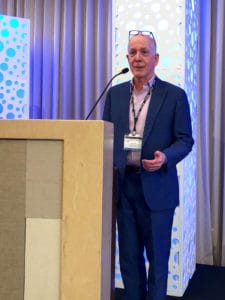
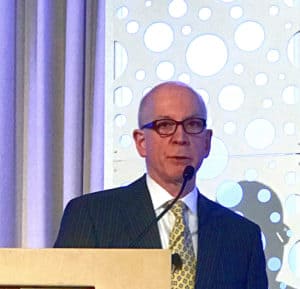

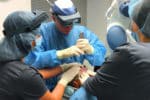 Video: Tensioner Placement
Video: Tensioner Placement